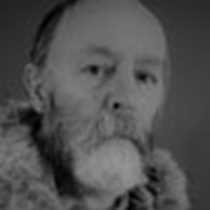Iona & Staffa, Scotland
Overnight we sailed from Ireland northwards towards Scotland on exactly the same route Saint Columba took on his voyage in 563AD from Glen Columcille (where we were yesterday) to Iona in Scotland. Despite its miniscule size, a mere three miles by one mile, Iona is an important place in early Christian history and in the early history of the kingdom of Scotland as a whole. Today we saw it in great conditions – very few other visitors, atmospheric light and shelter on land from the wind out on the Sound of Iona.
In the 1930s the Rev George MacLeod started the “Iona Community” which is still active today on the island and a few of our companions took early Zodiacs ashore to attend the non-denominational service in the beautifully restored abbey. Others took the option for a strenuous hike with Jim Kelley, some opted for a nature-oriented walk with Karen Copeland and the rest strolled the short distance from the Zodiac landing to the impressive Iona Abbey in the company of Steve Blamires and Vinnie Butler who gave historical and archaeological interpretation of this multi-layered site.
Plans for landing on the nearby uninhabited island of Staffa in the afternoon were not certain due to the strong winds blowing from the north. So during lunch we repositioned the ship close to the island and assessed the situation. Soon an announcement came from the Bridge that a landing could and would be made. Once again we were in the Zodiacs and enjoying the increasing sunshine and warming temperatures.
As we drew close we could see the fantastic shapes formed by the twisted and distorted hexagonal columns of basalt rock. The island is famous for its “Fingal’s Cave,” an enormous sea-cave with walls and roof of perfectly formed vertical basalt columns, and its large colony of puffins. Everyone enjoyed a Zodiac cruise close into the mouth of the gaping Fingal’s Cave, a view that very few people are privileged enough to see.
Before our daily recap Jim Kelley gave a presentation on the geology and famous geologists of Britain, and Scotland in particular, which not only explained the physical creation and formation of islands such as Staffa but also why Scotland is so important in the history and development of the modern science of geology.
The evening was rounded off by the showing of a 1970s BBC Television documentary on St. Kilda. Part of this intriguing film contains the only known movie footage of life on St Kilda before the evacuation in 1930. Steve Blamires gave a short introduction to fill out some important background details and this all helped prepare us for our next port of call, the Island of Hirta in the St Kilda archipelago, as the National Geographic Explorer ploughed her way westwards for our hoped-for landing there tomorrow.




